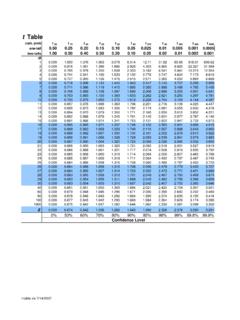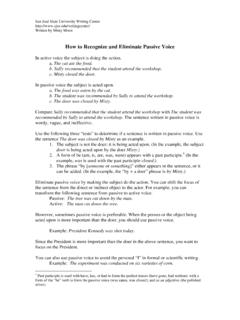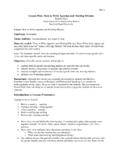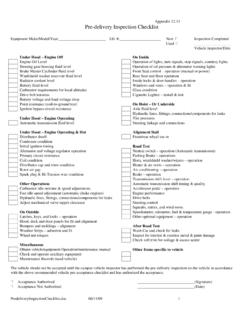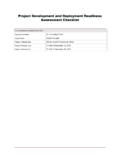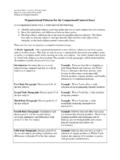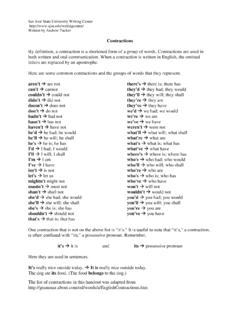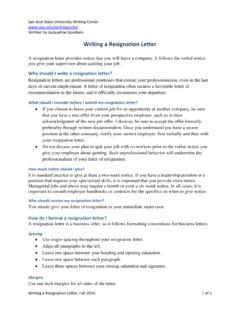Transcription of A Maze Vacuum Robot - San Jose State University
1 A Maze Vacuum Robot (RoboVac) Final Report EE 198 B Maung Maung Thomas M Ho Adviser: Dr. Kwok 12 / 1 / 2004 San jose Sate University 1 Contents Page 1. Abstract ---------------------------------------- -------------------------------- 3 2. Introduction ---------------------------------------- --------------------------- 4 3. General Design of our Robot ----------------------------------- -------------- 5 4. How RoboVac works? ---------------------------------------- --------------- 6 A. Micro controller chip ---------------------------------------- ------ 6 B. Main-Control and Sonar sensor --------------------------------- 8 C. Motor ---------------------------------------- -------------------------- 9 5.
2 Things that we learned from our project --------------------------------- 10 A. First Robot ---------------------------------------- -------------------- 10 B. Our first Robot s design figures ----------------------------------- 11 C. Second Robot (RoboVac) ---------------------------------------- --- 12 D. Second Robot (RoboVac) s design figures ----------------------- 13 6. Materials List (Part and Component in Details) ------------------------- 14 7. Cost analysis for the RoboVac ---------------------------------------- -------- 15 8. Time Schedules for our project ---------------------------------------- ------- 16 9. Circuit Diagrams for our Robot ---------------------------------------- ------- 17 A.
3 Main controller circuit ---------------------------------------- ----- 17 B. Motor controller circuit ---------------------------------------- ----18 C. Clock and other circuit ---------------------------------------- ----- 19 10. Program Codes for RoboVac ---------------------------------------- -------- 21 12. Conclusion------------------------------ -------------------------------------- 22 13. Appendix for program codes A. Main control ---------------------------------------- -------------- 23 B. Motor control ---------------------------------------- ------------ 31 C. PCEEPROM Interface ---------------------------------------- - 39 21. Abstract Robotics is a valuable educational tool that introduces students to a variety of different engineering disciplines such as electrical, computer, and mechanical engineering.
4 In order to prove that this work can be accomplished in one semester an autonomous Vacuum Robot was designed and built. This report describes the development of a Vacuum cleaner Robot prototype, both on software and hardware point of view. We used 4 x7 circuit board for the body of our Robot , and the total size of the Robot is about 6 inches in width and 10 inches in length. The height of our Robot is about 5 inches. On the board, we build our circuit. Mini Radio Shack wireless Vacuum is attached in front of the board and we put the sonar sensor on the top of the mini Radio Sharp Vacuum that we used to detect the obstacles when the Robot is moving. Both the hardware and software are successfully running simple algorithms for obstacles avoidance and desire destination.
5 This prototype also provides a valuable model for future Robot . 32. Introduction The research and development of a Robot prototype able to Vacuum cleaning a room, an office or even an entire house is not a trivial challenge. In order to tackle such a task, we did our research most of the time since we decided to design the prototype for Vacuum Robot and we tried to finish our project within one semester with our limited knowledge. Although nowadays, there are different brands of autonomous Vacuum Robot in the market, the reason that we want to do Vacuum Robot for our senior project is we want to design our Robot as simple as we can and we aware that we live in a world with shortened product life, an increased variety of products and a demand for higher quality on the products.
6 Continuous productivity improvement goes without saying. At the same time, increased safety reduced environmental impact and better working conditions become more and more important. Not only that we also want to reduce the manufacturing cost. So, we decided to design the prototype for the Vacuum Robot . The name of our Robot is RoboVac. RoboVac stands for Robotic Vacuum . Our RoboVac is a programmable Robot . Users can program the Robot to go in any path, as they desire. Our Robot is not only the prototype for autonomous Vacuum but also we can implement to mow Robot , street cleaning Robot , etc. 43. General Design of our Robot RoboVac has four main components. The first component is a sonar sensor. The sensor provides the Robot with information about its surroundings.
7 The Robot interprets data returned by the sensor about the environment and is able to make decisions accordingly. The second major component of the Robot is the micro controller and the memory. The micro controller controls all of the operations of the Robot , from collecting sensor data to carrying out appropriate actions. The memory holds the operating system and sensor data. The third main component of the Robot is the program. The program describes a set of rules for the Robot to follow. This tells the micro controller how often to sample the sensors, what to do based on the current State of the sensors, and how to implement actions through the output devices. The final component of the Robot is the output. This component consists of two stepper motors.
8 The Robot interacts with its surroundings using these devices. The micro controller (PIC16F84) and the memory (PIC16F84) compose the computational hardware of the system. The micro controller coordinates all of the Robot s operations; it collects data from the sensors, performs analog-to-digital (A\D) conversions, runs a multi-tasking operating system, runs the consumption program, and controls the stepper motors. PIC16F84 is a widely used micro controller that is flexible enough for a variety of applications. PIC16F84 is the logical choice for these particular applications with its 2 bytes of program memory, 128 bytes in the data EEPROM, 224 bytes data memory. So we use PIC16F84 to store the operating system, the program, and all pertinent information that the Robot needs to function.
9 54. How RoboVac works? RoboVac has one two-ways toggle switch and two push button switches. Two-ways toggle switch is one side for programmable mode and the other side is for ready to move mode. In order to know clearly which side of toggle switch is what for, we put two different lights in our circuit. If the toggle switch is on the programmable mode, the red light will be on and if the toggle switch is on the ready mode, the green light will be on. For the push button switches, one switch is for the run mode of the Robot and the other one is for the reset switch. A. Micro controller chip In our circuit of the Robot , we use three 8-bit CMOS micro controllers, which are PIC16F84A. We use one PIC16F84A for PC-EEPROM Interface and the other two are for Main Control and Motor Control of the Robot .
10 First of all, users have to know how to write a program to PC-EEPROM Interface PIC. If users want to write a program to PC-EEPROM Interface PIC, he/she have to put the toggle switch to program mode. RoboVac is a programmable Robot . Programmable means user can program it to follow a certain path as defined by 6 instructions that we have developed. Using as many combinations of these six instructions as necessary, users can program the Robot to go in any path they desire. They are as follow. S = Stop F = Forward B = Backward 6 L = Left R = Right D = Done The above 6 instructions work by associating a value to it. They are written as a text file. After that, using the GUI interface application (which is used to communicate with the Robot when programming the above 6 instructions), these commands are programmed into the Robot s on board EEPROM (memory) and then executed by the Robot s control circuit.

